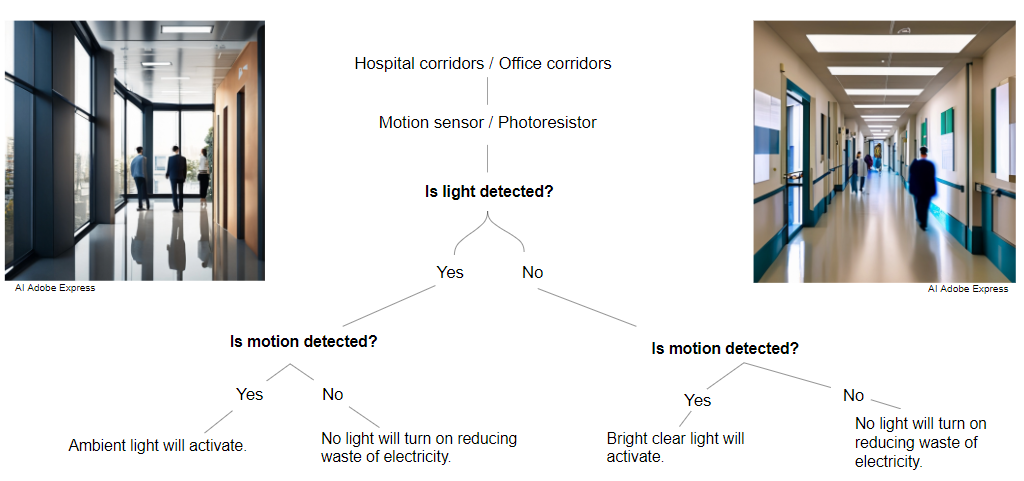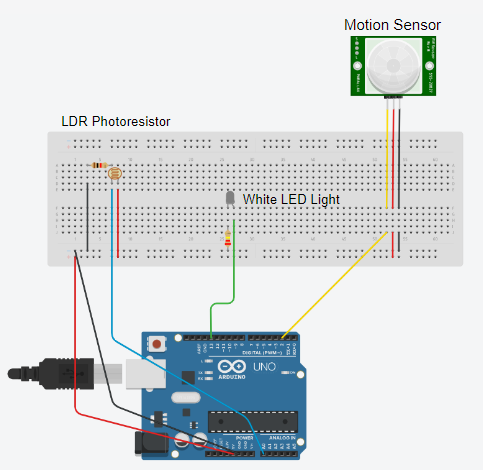A System of Sensors to Save Electricity
Many hospitals, public offices, warehouses are characterized by the presence of constant electric lighting at any time of the day, including
less-frequented areas and throughout the night.
But is this really necessary? Can’t there be a more sustainable and energy saving technology?
PowerPreserver_ uses both a LDR photoresistor, a
passive component that decreases resistance with respect to receiving
luminosity, and a PIR sensor, for motion detection on the basis of
infrared radiation.
This system reads the status of the motion sensor and the brightness
level. If motion is detected and the brightness is below the threshold, the
lights will turn on contributing to a more sustainable energy consumption
at night. During daytime the artificial lights are just going to be a support
of the natural day light by working at a less intensity as ambient lights.
SchematicSystem_

ConceptDiagram_ and BillofMaterials_


CodeDiagram_
GeneralImages_
DayTimeSituation_
NightTimeSituation_
NextSteps_
Starting with PowerPreserver, there are several technologies that can be applied to improve power losses even more. Moving toward an increasingly sustainable future, wireless communication could be added to the system by adding wireless communication modules (such as WiFi, Bluetooth, or Zigbee) for remote management of the system or even air quality sensors to monitor air quality and adjust lighting based on that data.
These technologies in the future could also be used in other environments such as smart gardens to control lighting in gardens or public parks, activating it only when it is needed, for example, at night or in the presence of visitors or as security lights in public or industrial places, activating it only when motion is detected and possibly in low light conditions, school classes and auditoriums, street lightings…
Video_

